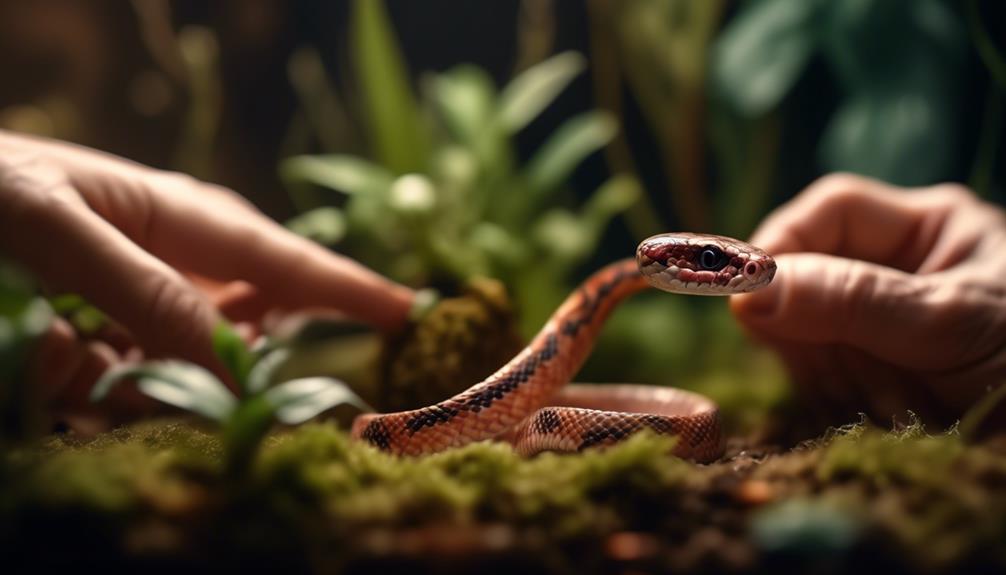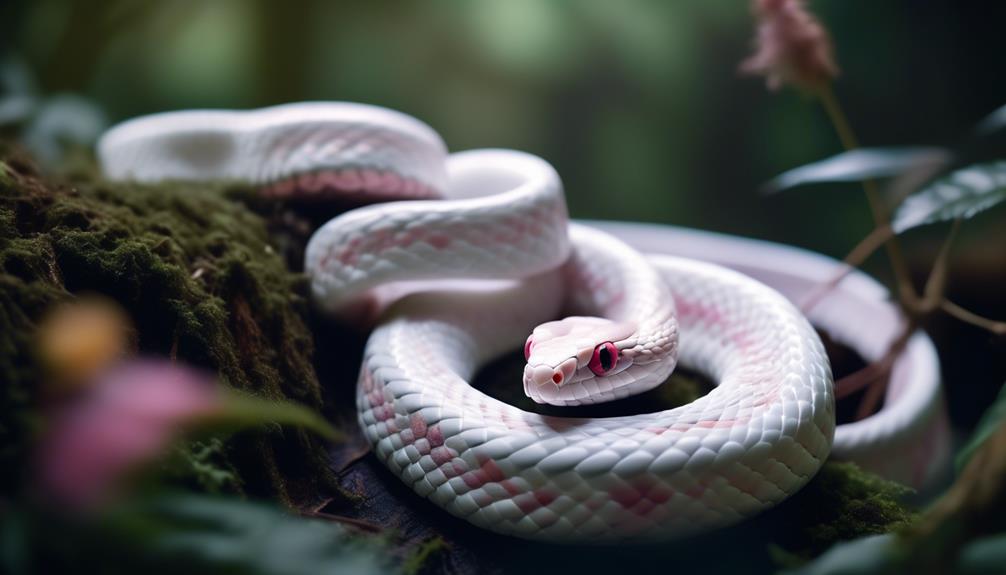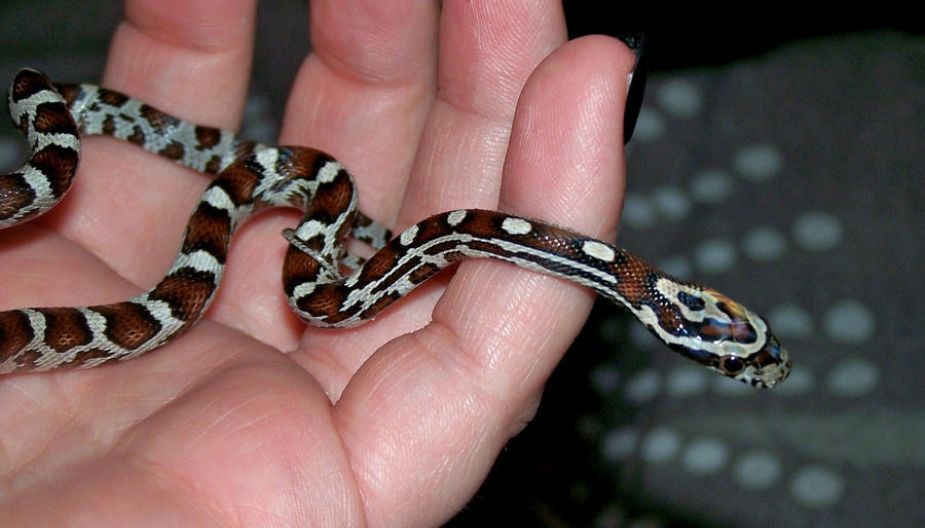Bringing home a hatchling corn snake is like adding a tiny sliver of nature's mystery to your household. As you carefully prepare the habitat and familiarize yourself with the delicate details of caring for these mesmerizing creatures, you'll find that the journey of nurturing a young corn snake is both rewarding and complex.
From creating the ideal environment to understanding their feeding habits and health needs, there's much to consider. But fear not, as we unravel the essential aspects of caring for hatchling corn snakes, guiding you through the process with expertise and insight.
Habitat Setup
When setting up the habitat for hatchling corn snakes, ensure that the enclosure provides the appropriate temperature, humidity, and hiding spaces for the snakes to thrive.
For substrate options, consider using aspen shavings, cypress mulch, or paper towels, which all provide secure footing and allow for burrowing.
Additionally, ensure the enclosure has multiple hiding spots to reduce stress. Half logs, cork bark, or commercial reptile caves are suitable choices for hiding spots.
As for lighting needs, corn snakes aren't reliant on UVB lighting but do need a regular day-night cycle. Position the enclosure in a location where it receives natural light during the day but avoid direct sunlight.
Enrichment activities are essential for the hatchlings' mental and physical well-being. Consider adding branches for climbing, as well as fake plants for exploration. Additionally, offering different textures like rough rocks or smooth stones can provide tactile stimulation.
Ensuring the hatchling corn snakes' habitat is equipped with these elements will contribute to their overall health and wellbeing.
Feeding Schedule
To ensure the proper growth and development of hatchling corn snakes, it's crucial to establish a consistent feeding schedule that meets their dietary needs. When it comes to feeding hatchling corn snakes, it's important to consider both prey size and feeding frequency to ensure their well-being. Here are some key points to keep in mind when creating a feeding schedule for your hatchling corn snake:
- Prey Size: Hatchling corn snakes typically feed on pinky mice or similarly sized prey. The prey item should be approximately the same width as the widest part of the snake's body to avoid any regurgitation issues.
- Feeding Frequency: A general rule of thumb is to feed hatchling corn snakes every 5 to 7 days. However, individual snakes may have slightly different feeding schedules based on their specific needs and growth rates.
- Observation: Always observe your snake's behavior and body condition after feeding to ensure they're digesting their food properly.
- Hydration: Offer a shallow dish of clean water at all times to keep your snake hydrated between feedings.
- Adjustments: Be prepared to make adjustments to the feeding schedule based on your snake's response and growth.
Temperature and Humidity
Maintaining the appropriate temperature and humidity levels is essential for the health and well-being of hatchling corn snakes. Providing a suitable heat source is crucial for their thermoregulation. Place a heat mat or heat tape on one side of the enclosure to create a thermal gradient, with the warm side ranging between 85-88°F (29-31°C) and the cooler side around 75-80°F (24-27°C.
This enables the hatchlings to move to their preferred temperature zone, aiding digestion and overall activity.
In addition to temperature, humidity levels must be carefully monitored. Use a hygrometer to ensure that the humidity stays between 40-60%. Maintaining proper humidity is especially important during the shedding process. Inadequate humidity can lead to complications during shedding, such as retained eye caps or skin.
To increase humidity, mist the enclosure lightly or provide a humidity box filled with dampened sphagnum moss.
Handling Techniques
Consider using a hook when gently picking up a hatchling corn snake to provide additional support and reduce the risk of injury. When handling your corn snake, it's important to use gentle and deliberate movements to avoid startling the snake.
Here are some tips to help you bond with and handle your hatchling corn snake:
- Start Slow: Begin with short handling sessions to gradually acclimate your snake to being held.
- Use Encouragement: Offer treats or food by hand to associate your scent with positive experiences for your snake.
- Avoid Quick Movements: Sudden movements can startle the snake, leading to stress and potential defensive behavior.
- Handle Regularly: Consistent handling helps in the taming process and builds trust between you and your snake.
- Be Patient: Building a bond with your snake takes time, so be patient and understanding throughout the socialization process.
Health and Wellness
When handling hatchling corn snakes, it's crucial to monitor their health and wellness to ensure their overall well-being and development. Veterinary care is essential to address any health issues that may arise. Regular check-ups with a reptile specialist can help in identifying and treating any potential illnesses early on.
Additionally, ensuring that the hatchling corn snakes receive proper nutrition is vital for their growth and development. Their diet should consist of appropriately sized prey items, such as pinky mice, and it's important to provide a well-balanced diet to meet their nutritional needs.
Environmental enrichment is also important for the health and wellness of hatchling corn snakes. Providing a suitable habitat with hiding spots, climbing branches, and appropriate substrate can help in reducing stress and promoting natural behaviors.
Socialization training, including gentle handling and exposure to different environments, can help in acclimating the hatchlings to human interaction and reducing their stress levels.
Conclusion
Congratulations on bringing home your new hatchling corn snake! Remember, caring for a baby snake requires patience, attention to detail, and regular maintenance. Keep in mind that their tiny size can make them seem fragile, but with proper care and handling, they'll thrive and grow into healthy adult snakes.
So, don't let the small size fool you – these little creatures have the potential to bring immense joy and wonder into your life. Happy snake parenting!


